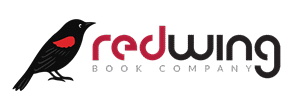About Redwing Book Company
The Company:
Redwing Book Company specializes in distributing both popular and professional resources for students and practitioners of Eastern and Western traditional healing arts. Our texts are selected for the quality of their sources, the expertise of their authors, and their timely application to the practical enhancement of health, treatment of disease, and understanding of our relationship to one another and the natural world.
We present our services on-line to communicate with our present customers, and to reach new students, practitioners, and aficionados of traditional healing practices from throughout the world. By maintaining a web presence we can offer our books to anyone in the world who has access to the Internet.
We invite you to join us in exploring some of the world’s best literature in cross-cultural wellness and healing.
The History:
Redwing Books started when Bob Felt bought the remains of the Tao Books and Publications store at 303 Newbury Street, Boston, MA. at a bankruptcy auction. Tao Books had been the flagship macrobiotic bookseller and publisher. He acquired two partners, both members of the Boston macrobiotic community. Together they renovated the 303 Newbury location and began working with the Tao Books creditors to re-establish a collection of books on the healing arts, martial arts, and East Asian philosophy and medicine. In 1973 Martha Fielding, a natural foods cook, creator of one of the first lines of prepared natural foods and a sought-after Boston cooking teacher, bought-out Bob’s partners. Martha and Bob would develop Redwing Books together until Martha’s death in 2016 when the next generation of the company relieved Bob at the helm.
As Redwing Books, they would help develop the Japan Publications series on massage, dietary practice and Japanese arts, George Oshawa’s macrobiotic publications, Master T.T. Liang’s Tai Chi manual, one of the first in the United States. They also restored Tao Books publications such as “The Natural Birth Control Book,” and “Acupuncture, Ancient and Future Worlds” by Michio Kushi, one of the first books to introduce the acupuncture channels and acupoints to English speakers.
During the decade of the 1970s Redwing acquired the only commercial collection of texts on acupuncture, including the French language texts of Chamfraut, Van Nghi and Soulie de Morant. At the time these books, particularly the Soulie de Morant, were the only source of extensive information about acupuncture then available. Over time, these would be joined by landmark publications such as the U.S. Government printing of the “Barefoot Doctors Manual” in translation, the first editions of “An Outline of Chinese Acupuncture,” as well as European works by Chancellor, Worsely and others. To encourage publishers to undertake books on East Asian Medicine, and to make importation practical, Redwing began the first distribution catalog, one side of a single sheet of paper.
In the decade of the 1980s Redwing was central to the development of acupuncture in the U.S. Bob Felt provided testimony before legislatures in Massachusetts and California deliberating on license laws, became chief executive of the New England School of Acupuncture after its near-bankruptcy, a period know still as “The Crisis.” The school survived, becoming one of the leading schools of acupuncture in the U.S. The growing distribution catalog was joined by a retail catalog mailed by hand to a few hundred students and teachers.
Starting in 1983 Redwing provided the technical and financial foundation for Paradigm Publications, which published and promoted versions of French and Japanese acupuncture, and the first un-simplified translations of Chinese medical texts used in the People’s Republic Chinese medical schools. By the 1990s Paradigm’s reputation extended to China and inspired a collaboration with People’s Medical Publishing House and other Chinese medical publishers. This resulted in the development of English language texts that were imported for English language readers.
At the beginning of the new millennium Redwing faced a critical decision. Real estate costs in Massachusetts, and the east coast generally, reach a level where it would no longer be feasible to store and insure texts that did not achieve moderate or better commercial success. This included most of the advanced texts, almost all foundation works and historical surveys, and many of the best clinical texts on acupunture. Rather than eliminate these titles, Redwing invested in a publication and fulfillment center in Taos New Mexico where building costs were feasible and the local population included artists, designers, and people capable of working with a clientele that needed more than someone to enter their orders.
